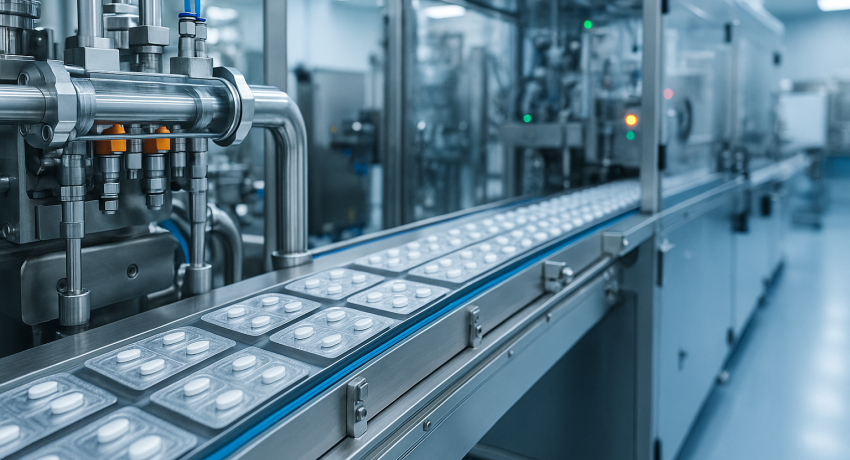
In August 2025, the FDA launched the PreCheck program, reshaping how new pharmaceutical manufacturing facilities are brought online in the United States (FDA, 2025). Instead of engaging only after construction, the agency now seeks earlier involvement during the design, build, and pre-production phases. For manufacturers, this means regulatory alignment starts well before qualification or turnover.
What the FDA PreCheck Program Does
PreCheck operates in two phases:
- Facility Readiness Phase: FDA opens a communication channel during facility design and construction, allowing manufacturers to share layouts, utility information, and quality system frameworks through a voluntary Type V Drug Master File.
- Application and CMC Review Phase: Once a product application is filed, FDA integrates early facility data into its Chemistry, Manufacturing, and Controls review to identify risks before inspection.
The goal is to speed market access and strengthen domestic drug production by preventing late-stage surprises (Foley Hoag, 2025).
Why It Changes the Build Sequence
In the traditional model, most regulatory scrutiny came after construction. Discovering deficiencies at that stage often meant redesigns, added cost, and launch delays. PreCheck changes this order. FDA now requires visibility during construction so that problems can be addressed while corrections are still possible.
This shift does not reduce validation or qualification requirements. It simply moves compliance upstream. Project teams must align engineering, quality, and regulatory disciplines earlier in the build cycle. Readiness is no longer a final milestone—it is part of daily project execution.
The Scale of U.S. Investment
Analysts estimate that more than $170 billion in biopharma facility projects are underway across North America. On top of this, major manufacturers have committed significant new investments in U.S. infrastructure by 2030:
- AstraZeneca: $50 billion for manufacturing and R&D expansion (AstraZeneca, 2025)
- GSK: $30 billion for manufacturing and research upgrades (GSK, 2025)
- Eli Lilly: $5 billion for a new facility in Virginia (Yahoo Finance, 2025)
- Roche: $50 billion in expanded U.S. R&D and manufacturing capacity (DCAT, 2025)
Combined, these commitments exceed $300 billion in active and pledged investment. Every one of these projects will face higher expectations for early compliance and operational readiness.
What Readiness Looks Like Under PreCheck
- Qualification Planning: Define and schedule equipment qualification well in advance of turnover.
- Procedures and Training: Ensure SOPs are functional and staff training is underway before startup.
- Documentation Integrity: Maintain systems that are audit-ready and accurately reflect current field conditions.
- Cross-Functional Coordination: Integrate QA, engineering, and regulatory teams from concept through commissioning.
Readiness can now be measured during construction, not after. Sites that incorporate compliance into their schedule will move more quickly through inspection and approval.
Stay Ahead of the FDA
FDA PreCheck signals a lasting change in how projects are evaluated. Manufacturers who front-load quality, documentation, and inspection preparedness will meet this new standard with less disruption. Those who delay integration risk rework and lost time to market.
Hygenix helps cleanroom and manufacturing leaders design readiness into every phase of their project. Our execution framework unites design, regulatory, and operational disciplines, ensuring your facility is inspection-ready from the start.
Contact Hygenix to discuss how your next project can stay ahead of the FDA and launch on schedule.

